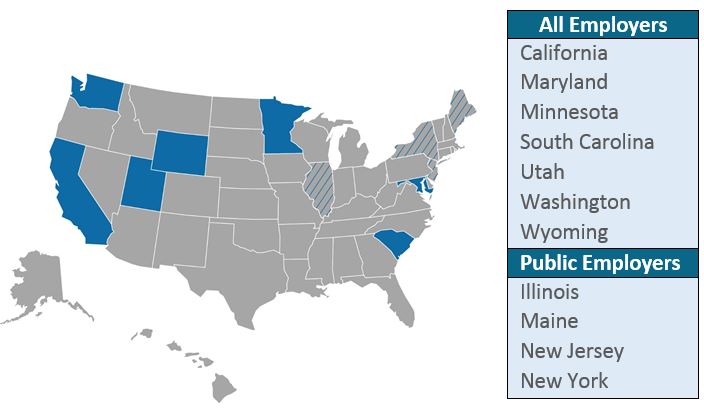
OSHA recently developed a standard for confined spaces in the construction industry (29 CFR 1926 Subpart AA). These spaces can present conditions that are immediately dangerous to your workers’ lives or health if not properly identified, evaluated, tested and controlled. As a result, preparing to respond to an accident in a confined space is just as important as training workers to enter them.
One provision of the standard requires employers to develop and implement procedures for summoning rescue and emergency services in permit-required confined spaces. Any employer who relies on local emergency services for assistance is required to meet the applicable requirements of the OSHA standard.
However, not all rescue services or emergency responders are trained or equipped to conduct rescues in confined spaces. When you identify an off-site rescue service, it is critical that the rescuers can protect your employees. The emergency services should be familiar with the exact site location, the types of permit-required confined spaces and the necessary rescue equipment.
Employer Considerations
Pre-planning for a rescue will ensure that the emergency service is capable, available and prepared to save your workers.
Before the start of any rescue operation, you must evaluate prospective emergency responders, and select one that has the following traits:
- Adequate equipment for rescues, such as the following:
- Atmospheric monitors
- Fall protection
- Extraction equipment
- Self-contained breathing apparatus (SCBA) for the particular permit-required confined space
- The ability to respond and conduct a rescue in a timely manner based on the site conditions, and the capability to conduct a rescue if faced with potential hazards specific to the space. These hazards may include the following:
- Atmospheric hazards
- Electrocution
- Flooding or engulfment
- Poor lighting
- Falls
- Chemical hazards
- The ability to notify you in the event that the rescue team becomes unavailable.
To ensure the safety of your workers, you must take a proactive role in securing the services of emergency responders. This includes finding the most efficient way of contacting emergency responders, conducting a tour of the project site with them and communicating any changes made to the site before a rescue becomes necessary.
Communicating With Emergency Responders
Talking with emergency responders about the hazards they might encounter during a rescue will assist in preparing for the situation. The following are some questions responders should be able to answer when you request their services:
- Are you able to respond and conduct a rescue in a timely manner based on the site conditions?
- Do you have the appropriate equipment for response and rescue?
- Are you prepared for the hazards identified at the project site?
- Are you aware of the exact location of the work site? This includes information on access routes, gates, site plans and GPS coordinates.
- Can you visit the site and hold a practice rescue?
- What is the best way to contact you? How would I communicate any changes to site conditions throughout the project?
- Could other emergencies or group training preclude you from responding, and how will that be communicated?
Additional Resources
Complying with OSHA’s new standard will protect your workers and save you from costly penalties. Contact us today at 831-661-5697; we can provide you with our comprehensive resource, “Permit-required Confined Spaces in Construction Program and Training Materials.”
Read more

According to a report by the U.S. House of Representatives’ Committee on Education and Labor, a staggering 69 percent of all workplace injuries and illnesses may not be represented in the Bureau of Labor and Statistics Survey of Occupational Injuries and Illnesses, which many trust as a gauge of the safety of American workplaces. On a corporate level, not reporting or underreporting workplace injuries can have serious ramifications for the organization and the employer, which can include fines, exorbitant and unnecessary, health costs and more.
Research has found that the employer’s behavior, policies and attitude are key determinants in a worker’s decision to report an injury. Not only is it essential that employees are educated on the importance of reporting injuries, it is also important to examine your company policies so you are not inadvertently discouraging reporting. The consequences of underreporting can be severe.
Consequences of Underreporting
The unfortunate trend of injury underreporting can have serious ramifications at both the industry and company level. Widespread underreporting can be quite damaging to workers’ compensation rates on a large scale. Employers may not realize it, but such an underreporting problem may lead to more audits by insurance companies of their clients and higher rates for everyone. Many employers erroneously believe that reporting injuries leads to audits and higher rates.
At the company level, underreporting injuries can be quite costly for the employer. If it is an OSHA-reportable incident, the employer may face significant fines if it is not properly recorded or reported.
In addition, often when an injury isn’t reported or properly cared for immediately, it worsens and leads to higher health care costs and more lost time. Even if it is never reported as a workplace injury, the employer still loses out on health care costs and productivity. If it is eventually reported, it becomes much more difficult to prove that it was workplace-related. Additionally, a study reported by the Hartford Financial Services Group found that injuries reported four or five weeks after the incident are 45 percent more expensive than injuries reported within the first week due to increased health costs and possible legal fees, or even a lawsuit, associated with late reporting.
One of the best ways to control workers’ compensation costs is through early reporting and intervention. Not only will it save money in health bills and legal fees, but it will also help to constantly improve your safety program. When there is an injury, consider it an opportunity to examine current safety procedures and decide if there is a suitable change that could be made to prevent similar injuries in the future. Thus, prompt reporting can be a productive element to your safety program in your quest to always strive for the safest work environment. Rather than accepting a vicious circle where injuries are not reported and thus nothing is done to fix the problem, leading to more injuries, take advantage of injury reporting as a proactive solution to safety.
Reasons for Underreporting
There are several reasons why employees may not report injuries immediately or at all.
Incentive programs: Many employers have reward or incentive programs to promote their safety initiatives, such as rewards for going a certain number of days without an injury. This can create a negative attitude toward reporting an injury, since doing so could cost that employee, a co-worker or a superior a reward or bonus.
Having incentive programs are a good idea, but a more effective strategy is to reward positive, safe behaviors. This can include reporting a safety hazard, attending a safety meeting or training class or equipment maintenance. Rather than rewarding for days without an injury, reward behaviors that strive to avoid injury, or even reward employees for prompt reporting when an injury occurs.
Fear of negative ramifications: Some employees fear that reporting an injury will create an image of them as weak to their co-workers and managers. He or she also may fear that such an image will be a detriment to his or her career.
Dispel this fear by assuring all employees that reporting an injury will have no negative impact on their job, and ensure follow through on all levels of the company. Work to promote a safety culture where prompt injury reporting is encouraged and praised. Injury reporting should never be frowned upon, even subtly or behind closed doors. If employees find out you are angry about a reported injury, he or she is less likely to report an injury in the future.
Some companies have a policy mandating drug testing after any incident whether or not there is evidence of drug use. This deters some employees from reporting injuries as well. Consider making the drug testing conditional depending on the circumstances of the injury and whether there is evidence that drug use was a factor.
For more information about injury reporting or your company’s workers’ compensation and safety programs, please contact Scurich Insurance at 831-661-5697 today.
Read more

Following the Hazardous Waste Operations and Emergency Response (HAZWOPER) requirements and regulations not only protects the health and safety of your employees, but it also saves you from expensive litigation you could face if you accidentally expose the outside environment and nearby residents to the potentially hazardous toxins on the worksite.
Officials from the Occupational Safety and Health Administration (OSHA), the U.S. Environmental Protection Agency (EPA) and the National Institute for Occupational Safety and Health (NIOSH) all have input on HAZWOPER’s regulations because of the widespread effect hazardous waste has on the population as a whole, not just the industries’ workforces. This document will help you understand the basic requirements of HAZWOPER and determine whether you are in compliance. For a complete list of HAZWOPER requirements or to read the standard in its entirety, visit www.OSHA.gov and search HAZWOPER (Standard 29 CFR 1910.120).
Who Needs to Comply?
HAZWOPER applies to the following types of operations, unless the employer can demonstrate that the operation does not involve the reasonable possibility of employee exposure to safety or health hazards:
- Cleanup operations required by a government body (federal, state or local) involving hazardous substances conducted at uncontrolled hazardous waste sites
- Corrective actions involving cleanup operations at sites covered by the Resource Conservation and Recovery Act (RCRA)
- Voluntary cleanup operations at sites recognized by government bodies (federal, state or local) as uncontrolled hazardous waste sites
- Operations involving hazardous waste conducted at treatment, storage or disposal facilities
What qualifies as an emergency under HAZWOPER can vary, and you should consider the nature of your operation and the extent of your employees’ training. For example, small acid spills by a firm that routinely handles acids would not be an emergency; however, the same situation might be considered an immediate hazard on a site where employees have less training, equipment or experience. In the event that employees are in the following situations, the HAZWOPER standard would apply:
- Presence of high concentrations of toxic substances
- Any situation involving hazardous substances that is life- or injury-threatening
- Environments that present imminent danger to life and health (IDLH situations)
- Accidents that present an oxygen-deficient atmosphere
- Conditions that pose a fire or explosion hazard
- Any situation that requires the evacuation of an area or that requires immediate attention because of the danger posed to employees in that area
HAZWOPER Training
This standard provides specific safety regulations, emergency procedures and training guidelines for employers to follow at worksites that handle hazardous waste or who have the potential for accidental release of dangerous chemical substances. HAZWOPER’s main goal is to get employers to think about how they would handle a spill before it occurs.
HAZWOPER sets five basic training levels related to chemical emergency response, and training requirements for these five groups vary depending on how closely they work with the hazardous material spill. All training must be completed upon hiring for any employee that is expected to participate in emergency response.
- First Responder Awareness Level — individuals likely to witness a hazardous substance release and whose only responsibility would be notifying the proper authorities. Must have sufficient training to demonstrate the following:
- Understanding of what hazardous substances are and the risks associated with them in an incident
- Understanding of the potential outcomes associated with a hazardous substance emergency
- The ability to recognize the presence of hazardous substances
- The ability to identify the hazardous substances, if possible
- The ability to realize the need for additional resources and make appropriate notifications
- First Responder Operations Level — individuals who respond to releases of hazardous substances for the purpose of protecting nearby people, property or environment from damage. They should respond defensively by containing the release and keeping it from spreading. Must have eight hours of training or sufficient experience to demonstrate the following:
- Knowledge of hazard and risk assessment
- Knowledge of proper personal protective equipment (PPE) use
- Knowledge of basic control, containment and/or confinement operations
- Understanding of standard operating procedures
- Hazardous Materials Technician — individuals who respond to releases with the purpose of actively and aggressively stopping it. They will attempt to plug, patch or otherwise stop the hazardous substance release. Must have at least 24 hours training, all the first responder operations knowledge and the following:
- Knowledge of how to implement the employer’s emergency response plan
- Ability to classify, identify and verify known and unknown materials by using survey equipment
- Knowledge of how to select and use specialized chemical PPE
- Have the ability to perform advanced control, containment and/or confinement operations with the resources and PPE available
- Knowledge of basic chemical and toxicological terminology and behavior
- Hazardous Materials Specialist — individuals who respond with and provide support to hazardous material technicians, but with more specific knowledge of various hazardous substances. Also acts as the site liaison with government authorities. Must have 24 hours of training, all technician-level knowledge and employer-certified knowledge on the following:
- The local, state and federal emergency response plan
- Classification, identification and verification of known and unknown materials using advanced survey equipment
- The implementation of decontamination procedures
- Advanced chemical, radiological and toxicological terminology and behavior
- On-Scene Incident Commander — individuals who assume control of the incident site. Must have 24 hours of training and employer-certified competency in the following areas:
- Ability to implement the employer’s incident command system
- Ability to implement the employer’s emergency response plan and the local/state/federal emergency response plan
- Understanding of the hazards and risks associated with employees working in chemical protective clothing
- Understanding of the importance of decontamination procedures
Some important notes on training regulations in the HAZWOPER standard are that measurements of a qualified trainer can be met by academic degrees, completed training courses and/or work experience. Also, HAZWOPER specifically addresses the use of video or online training to satisfy requirements, saying that computer-based systems are an incomplete solution and must be supplemented.
HAZWOPER Emergency Response Plan
Another important section of the HAZWOPER section you should take note of is the need for an emergency response plan with regard to hazardous substance releases. HAZWOPER gives the following guidelines for employers’ emergency response plans, saying it should at least include the following:
- Pre-emergency planning
- Personnel roles, lines of authority, training and communication standards
- Emergency recognition and prevention
- List of safe distances and places of refuge
- Site security and control standards
- Evacuation routes and procedures
- Decontamination procedures
- Emergency medical treatment and first aid procedures
- Emergency alerting and response procedures
- Critiques and follow-ups on previous emergency response situations
For more information on how you can further implement HAZWOPER loss control methods, contact Scurich Insurance.
Read more

Why is job safety and health important?
In 2013, 4,585 employees died from occupational incidents, and there were a staggering 3.0 million total recordable cases of workplace injury and illness. On average, each of these 3.0 million cases required eight days away from work, which means U.S. employers as a whole paid for millions of days of lost work time. Experts estimate that workplace injuries and illnesses cost U.S. businesses more than $125 billion annually. Effective job safety and health programs not only help reduce worker injuries and illnesses, they save employers money in the long run.
How does OSHA contribute to job safety and health?
The primary goal of the Occupational Safety and Health Administration (OSHA) is to carry out the Occupational Safety and Health Act (OSH Act), which Congress originally passed in 1970. The OSH Act has undergone several amendments and revisions since its inception, but it is still in place “to assure so far as possible every working man and woman in the Nation safe and healthful working conditions and to preserve our human resources.” OSHA contributes to job safety and health by enacting regulations that forward this ideal.
Title 29 of the Code of Federal Regulations (CFR), Parts 1902-1990, houses all the OSHA standards, though OSHA also allows states to enact occupational safety and health laws of their own under federally-approved plans. State-run programs are at least as strict, and sometimes more so, than federal standards. This ensures a minimum standard of job safety and health that all employers must follow to protect employees.
Are all employees covered by the OSH Act?
The OSH Act covers all employees except public employees in state and local governments and those who are self-employed. Public employees in state and local governments are covered by their state’s OSHA-approved plan, if applicable.Federal employees are covered under the OSH Act’s federal employee occupational safety and health programs, which are outlined in 29 CFR Part 1960.
United States Postal Service employees, however, are subject to the same OSH Act coverage provisions as those in the private sector.Other federal agencies that have issued requirements affecting job safety or health include the Mine Safety and Health Administration (MSHA) and some agencies of the Department of Transportation (DOT), including the Federal Motor Carrier Safety Administration (FMCSA).
Employees in these industries are subject to their respective regulations.Additionally, businesses in the retail, service, finance, insurance and real estate sectors that are classified as low-hazard are exempt from most OSHA requirements, as are small businesses with 10 or fewer employees. Exceptions are discussed in 29 CFR Part 1904, which also explains which OSHA regulations exempt employers are still required to follow.
What are your responsibilities as an employer?
If you are an employer covered by the OSH Act, you must provide your employees with jobs and a place of employment free from recognized hazards that are causing, or are likely to cause, death or serious physical harm. You must also comply with the OSHA statutory requirements, standards and regulations that require you to:
- Provide well-maintained tools and equipment, including appropriate personal protective equipment (PPE)
- Provide medical assistance and guidance for employees sustaining workplace injuries/illnesses
- Provide required OSHA training
- Report accidents that result in fatalities to OSHA within eight hours
- Report accidents that result in the hospitalization of three or more employees to OSHA within eight hours
- Keep records of work-related accidents, injuries, illnesses and their causes
- Post annual injury/illness summaries for the required period of time
What are your rights as an employer?
When working with OSHA, you may do the following:
- Request identification from OSHA compliance officers
- Request an inspection warrant
- Receive a reason for inspection from compliance officers
- Have an opening and closing conference with compliance officers
- Accompany compliance officers on inspections
- Request an informal conference after an inspection
- File a notice of contest to citations or proposed penalties
- Apply for a variance from a standard’s requirements under certain circumstances
- Be assured of the confidentiality of trade secrets
- Submit a written request to the National Institute for Occupational Safety and Health (NIOSH) for information on potentially toxic substances in your workplace
What are employees’ responsibilities?
All employees are obligated to help prevent exposure to workplace safety and health hazards by becoming familiar with and adhering to all applicable OSHA requirements.
What are employees’ rights?
With regards to OSHA regulations, employees have the right, among other actions, to:
- Review employer-provided OSHA standards, regulations and requirements
- Request information from the employer on emergency procedures
- Receive adequate, OSHA-required safety and health training on toxic substances and emergency action plan(s)
- Ask the OSHA area director to investigate hazardous conditions or violations of standards in the workplace
- Have his or her name withheld from the employer when filing a complaint with OSHA
- Know what actions OSHA took as a result of the employee’s complaint and have an informal review of any decision not to inspect or issue a citation
- Have an employee representative accompany the OSHA compliance officer on inspections
- Observe monitoring and measuring of toxic substances or harmful physical agents and review related records (including medical records)
- Review the Log of Work-Related Injuries and Illnesses (OSHA 300 Form), if applicable, at a reasonable time
- Request a closing discussion following an inspection
- Object a citation’s set abatement period
- Seek safe and healthful working conditions without your employer retaliation
Why is OSHA important to your business?
OSHA plays a key role in making your facility a safe, healthy place to work. Beyond providing the tools and guidance to work toward an injury- and illness-free workplace, OSHA is important in identifying businesses that are not committed to safety. Employers that do not carefully follow OSHA regulations often face hundreds of thousands, if not millions, of dollars in fines.
How can you get more information on safety and health?
OSHA provides free publications, standards, technical assistance and compliance tools to help you understand the nuances of the regulations. OSHA’s website also offers extensive assistance by way of workplace consultation, voluntary protection programs, grants, strategic partnerships, state plans, training and education to guide you in your quest for workplace safety. To learn more about OSHA and the critical elements of a successful safety and health management system in your workplace, visit www.osha.gov.
This document is an introductory guideline. It does not address all potential compliance issues with OSHA standards. It is not meant to be exhaustive or construed as legal advice. Contact your licensed commercial property and casualty representative at Scurich Insurance or legal counsel to address applicable compliance requirements. © 2009-2012, 2015 Zywave, Inc. All rights reserved.
Read more

On April 30, 2018, the Occupational Safety and Health Administration (OSHA) announced it will require all establishments affected by the electronic reporting rule to submit their 2017 data to OSHA by July 1, 2018.
This announcement clarifies the requirement for establishments in states with an OSHA-approved plan. These establishments must submit electronic reports, regardless of whether the state has ratified or incorporated the electronic reporting rule into its OSHA state plan.
Establishments in all states, including those with an OSHA-approved state plan, should prepare to submit electronic reports by July 1, 2018. Affected establishments can accomplish this by:
- Becoming familiar with the requirements in the electronic reporting rule; and
- Transitioning their OSHA records to an electronic format approved by the Injury Tracking Application (ITA).
OSHA Electronic Reporting
OSHA’s electronic reporting rule was issued in 2016. The rule requires establishments to report data from their injury and illness records to OSHA electronically if they:
- Are already required to create and maintain OSHA injury and illness records and have 250 or more employees;
- Have between 20 and 249 employees and belong to a high-risk industry; or
- Receive a specific request from OSHA to create, maintain and submit electronic records, even if they would otherwise be exempt from OSHA recordkeeping requirements.
The electronic reporting rule applies to establishments, not employers. An employer may have several worksites or establishments. In these situations, some establishments may be affected while others are not.
To determine whether an establishment is affected, employers must determine each establishment’s peak employment during the calendar year. During this determination, employers must count every individual that worked at that establishment, regardless of whether he or she worked full-time, part-time, or was a temporary or seasonal worker.
OSHA-approved State Plans
The final rule required OSHA-approved state plans to adopt the electronic rule or “substantially identical” requirements within six months of the final rule’s publication date.
|
All Employers |
| California
Maryland
Minnesota
South Carolina
Utah
Washington
Wyoming |
|
Public Employers |
| Illinois
Maine
New Jersey
New York |
This means that OSHA-approved state plans have the authority to adopt reporting requirements that go above and beyond what is required by the federal rule. For this reason, establishments located in OSHA-approved state plan jurisdictions should consult with their local OSHA offices to make sure they are satisfying all electronic reporting requirements.
The OSHA-approved state plans shown on this map have not yet adopted the requirement to submit injury and illness reports electronically.
As a result, establishments in these states were not required to submit their 2016 data through the reporting website in 2017. However, OSHA has now clarified that they must submit their 2017 data in 2018.
Read more

On April 30, 2018, the Occupational Safety and Health Administration (OSHA) announced it will require all establishments affected by the electronic reporting rule to submit their 2017 data to OSHA by July 1, 2018.
This announcement clarifies the requirement for establishments in states with an OSHA-approved plan. These establishments must submit electronic reports, regardless of whether the state has ratified or incorporated the electronic reporting rule into its OSHA state plan.
Establishments in all states, including those with an OSHA-approved state plan, should prepare to submit electronic reports by July 1, 2018. Affected establishments can accomplish this by:
- Becoming familiar with the requirements in the electronic reporting rule; and
- Transitioning their OSHA records to an electronic format approved by the Injury Tracking Application (ITA).
OSHA Electronic Reporting
OSHA’s electronic reporting rule was issued in 2016. The rule requires establishments to report data from their injury and illness records to OSHA electronically if they:
- Are already required to create and maintain OSHA injury and illness records and have 250 or more employees;
- Have between 20 and 249 employees and belong to a high-risk industry; or
- Receive a specific request from OSHA to create, maintain and submit electronic records, even if they would otherwise be exempt from OSHA recordkeeping requirements.
The electronic reporting rule applies to establishments, not employers. An employer may have several worksites or establishments. In these situations, some establishments may be affected while others are not.
To determine whether an establishment is affected, employers must determine each establishment’s peak employment during the calendar year. During this determination, employers must count every individual that worked at that establishment, regardless of whether he or she worked full-time, part-time, or was a temporary or seasonal worker.
OSHA-approved State Plans
The final rule required OSHA-approved state plans to adopt the electronic rule or “substantially identical” requirements within six months of the final rule’s publication date.
This means that OSHA-approved state plans have the authority to adopt reporting requirements that go above and beyond what is required by the federal rule. For this reason, establishments located in OSHA-approved state plan jurisdictions should consult with their local OSHA offices to make sure they are satisfying all electronic reporting requirements.
For this reason, establishments located in OSHA-approved state plan jurisdictions should consult with their local OSHA offices to make sure they are satisfying all electronic reporting requirements.
The OSHA-approved state plans shown on this map have not yet adopted the requirement to submit injury and illness reports electronically.
As a result, establishments in these states were not required to submit their 2016 data through the reporting website in 2017. However, OSHA has now clarified that they must submit their 2017 data in 2018.
Read more







